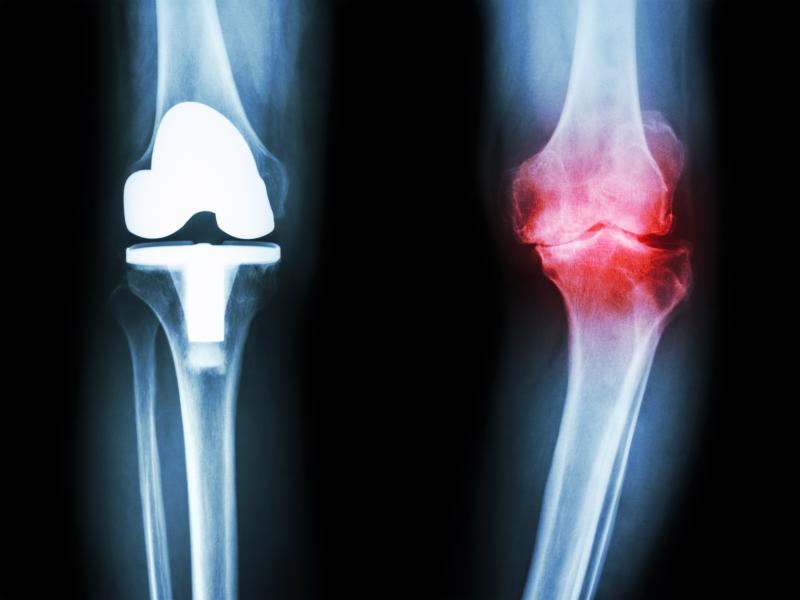
Routinely used for treating cardiovascular diseases, statins have been shown to benefit other conditions, and new evidence suggests that using the drug at high intensity reduces the risk of hip or knee replacement, an effect that may be specific to rheumatoid arthritis (RA).
The study used data from the UK Clinical Practice Research Datalink and included 178,467 statin users (mean age, 61.91 years; 50.29 percent female) and an identical number of propensity-score matched nonusers. Mean duration of follow-up was 6.88 and 6.25 years, respectively. Researchers categorized statin exposure according to the potency of reducing low-density lipoprotein as low (21–28 percent), medium (32–38 percent), or high intensity (42–55 percent).
The majority of statin users (73.39 percent) initiated treatment at medium intensity and had good adherence (percentage of days covered, 80) both at baseline in the first year of follow-up (75 percent and 63 percent, respectively). About 26 percent of users discontinued treatment during the first 2 years.
Statins did not seem to alter the risk of knee or hip replacement (hazard ratio [HR], 0.99, 95 percent confidence interval [CI], 0.97–1.03) overall, unless taken at high strength (HR, 0.86, 95 percent CI, 0.75–0.98). The risk–reduction benefit was only observed for joint replacement due to RA (HR, 0.77, 95 percent CI, 0.63–0.94) but not OA (HR, 0.97, 95 percent CI, 0.94–1.01).
The present data suggest that statins reduce subsequent joint damage and slow the rate of progression to surgery, according to the researchers. Confirming that statins work against both cardiovascular events and RA-related joint replacement might lead to some changes in treatment recommendations.
Additional studies are needed to investigate the mechanisms of statins in RA.